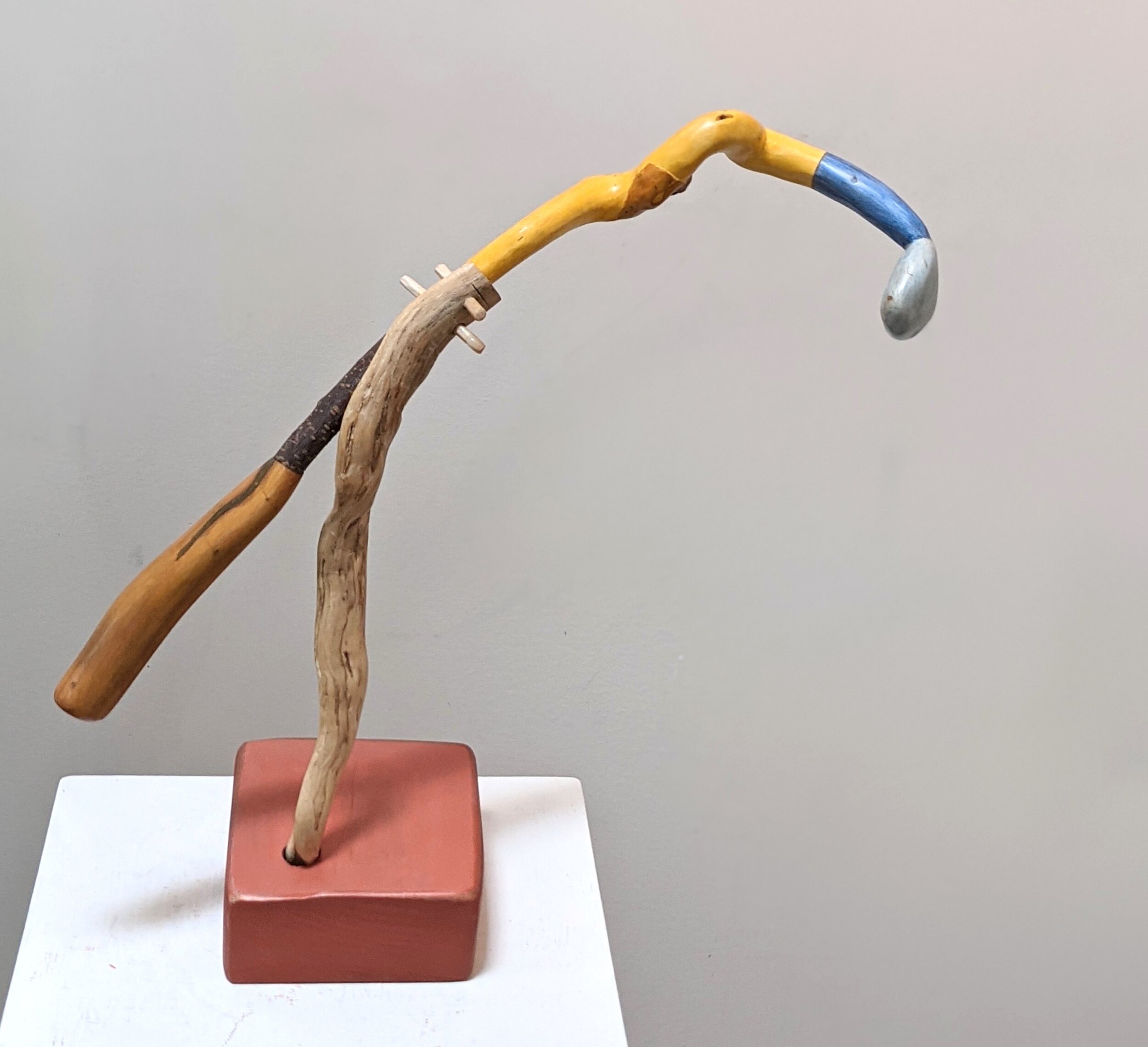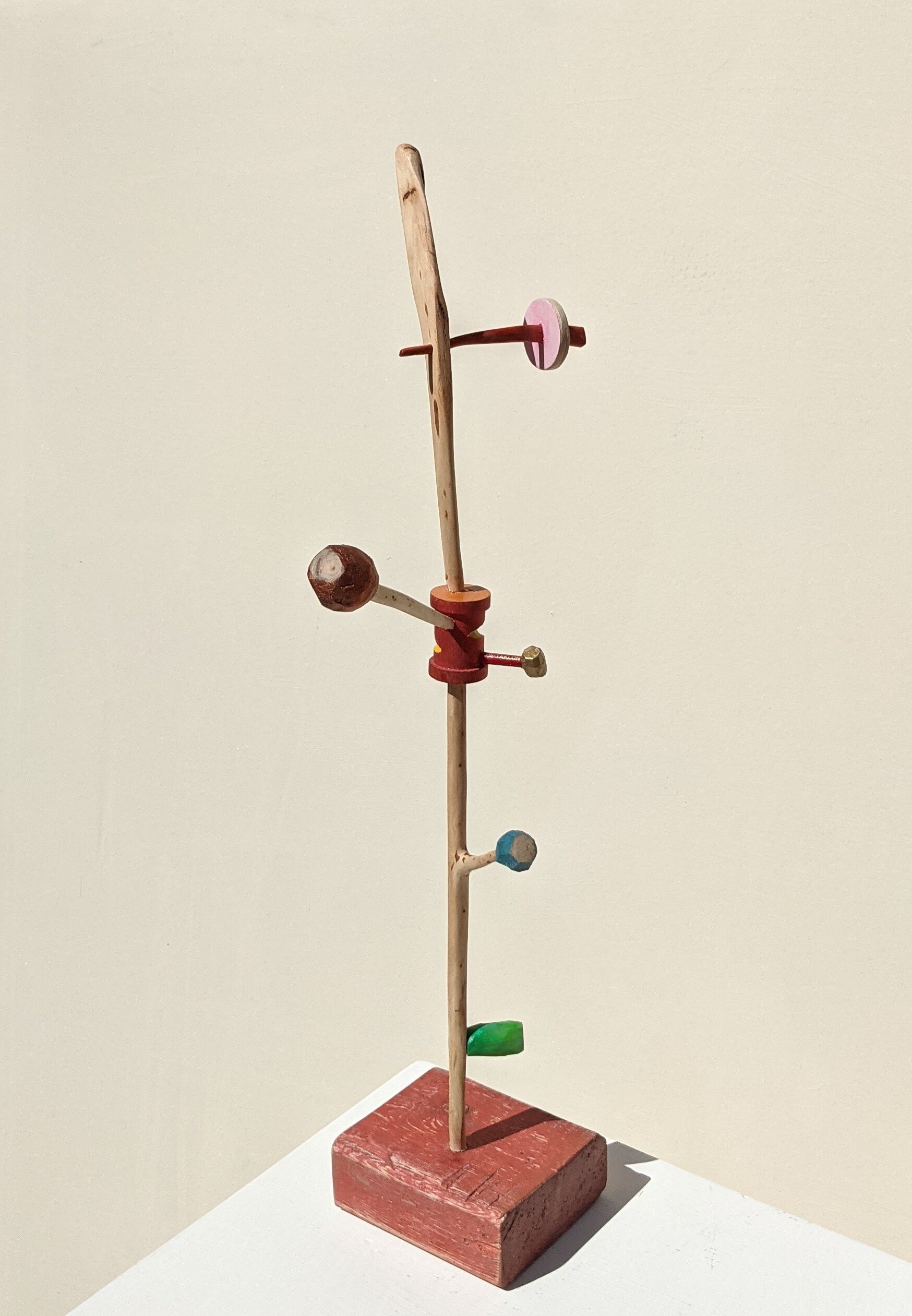A Conversation between Joel Moskowitz + Kathline Carr
In this post, Kathline Carr interviewed fellow core member Joel Moskowitz about his newest body of work. Joel’s work is currently on view in the main gallery along with the work of Tatiana Flis in their exhibition, “A House for the Moon.” The show runs through Sunday, September 26th.

Kathline: Up for an interview?
Joel: Yes. Kate, I've admired your own work as a writer and visual artist for a long time, and am glad to have this conversation with you.
Kathline: Is there specific new work you will be sharing?
Joel: There are two bodies of work. One is my Boggle Drawings, which are monochromatic illustrations done on my handwritten word lists from playing Boggle during the pandemic.
The other is sculpture made from roots and branches. Sometimes I add an element from leftover construction materials, like a bead carved out of a two-by-four, a braided wire, or an old brass screw for fastening a root to a wooden panel.
Kathline: Can you give me some background on your practice, and what has inspired you particularly regarding your latest body of work?
Joel: In previous years a lot of my artwork incorporated text: words, letters, and numbers. My new series of Boggle Drawings grew from my love of language.
As for my sculptures: I was a painter, but when we moved here two years ago, and the world was in upheaval... sculpture is what I actually had studied back in college; and I see shapes more than color; so changing over to sculpture felt natural, visceral, like coming home.
Kathline: Much of your work feels very connected to nature. In what way does your relationship to the natural world culminate in your visual production?
Joel: After we moved here, I found torn roots sticking up out of the earth, from the trees we had taken down for the house construction. Handling these remnants made me feel peaceful, and I liked them for their dislocation. I began to use other natural things: root balls of invasive buckthorn gathered from the forest; pruned blueberry branches, for their color and their twists. Using these, I felt a connection. And I simply fastened them together with whatever I had, screws, wires, or pegs, letting the fastening devices show. I like art that lets the viewer see how it's done.
Kathline: You are also a writer. How do you manage multiple practices? Is there a dominant medium?
Joel: Good questions, which I obsessively ask myself. Every morning I write and revise poems. I started writing after I had become an artist. I had not thought of myself as fluent with language, but suddenly found myself writing in free verse. Both poetry and visual art challenge me and battle each other for dominance within me.
Kathline: Is there a direct connection between certain pieces of writing and visual work? Often, sometimes, never?
Joel: I sometimes write about visual art, describe my process, my connection to other artists, the art I love. All my life comes out in my poems. But the creative process doesn't flow the other way: I don't make art about my poems, nor do I illustrate them, though I think about doing so. Sometimes there is an unintended connection between a sculpture and a poem: the tilted black house relates to a poem about insomnia and the consoling moon.
Kathline: As we approach an actual and metaphoric new season, is there a new direction you feel yourself heading in?
Joel: Recently, I began some paintings, just bars of color stacked on top of one another, built up like logs. Acrylic on paper. I'm trying to be free, letting them be a little messy and loose.


